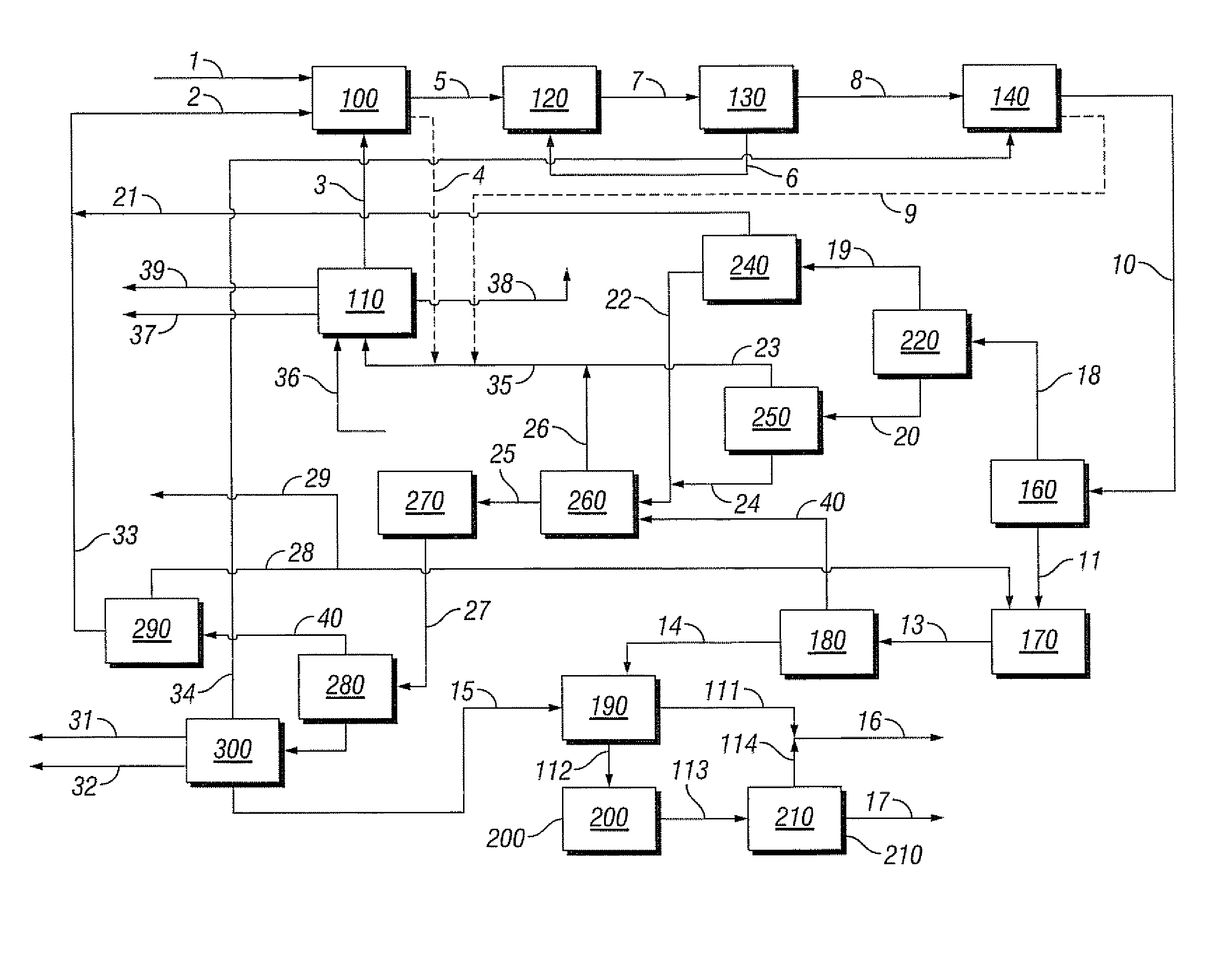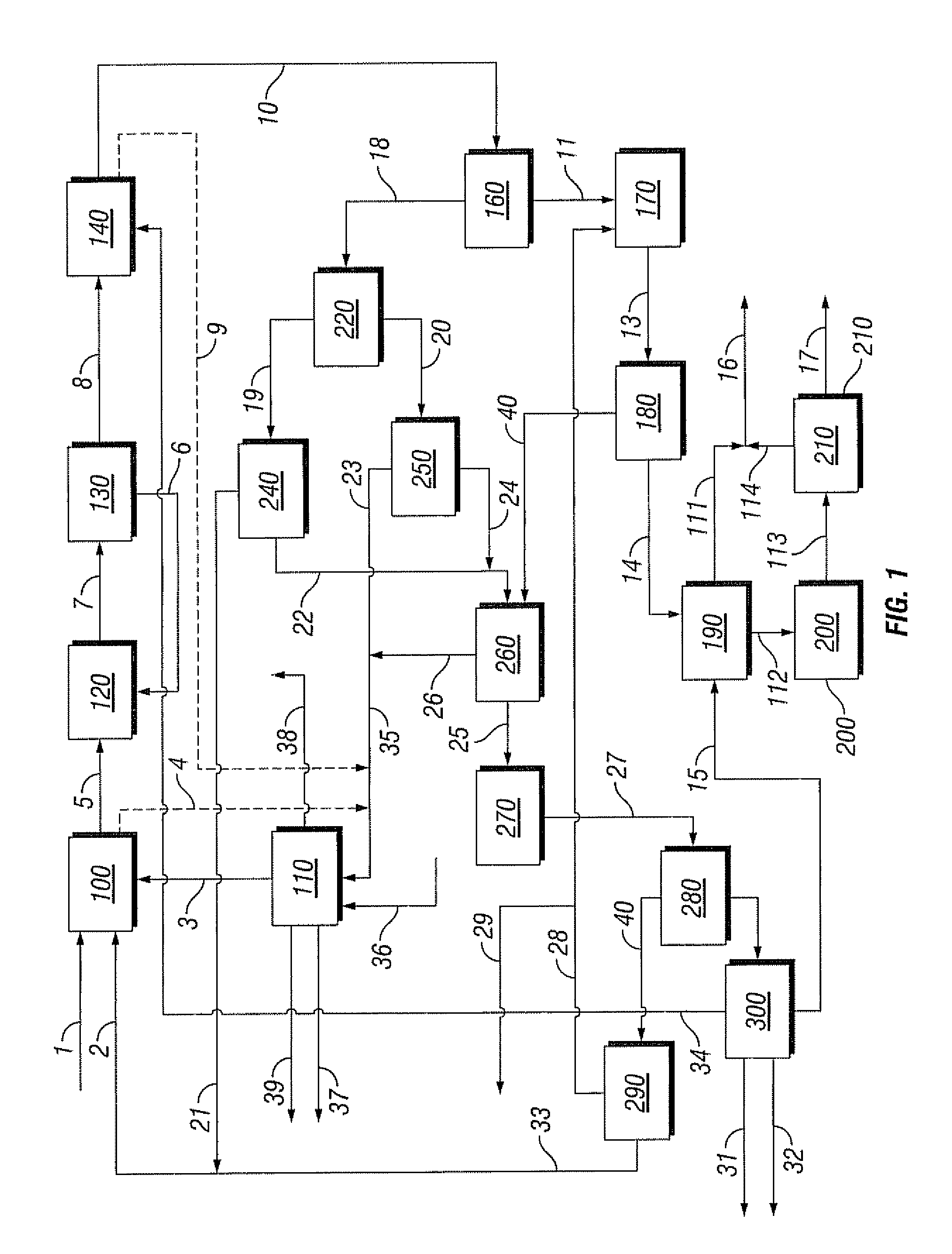Integrated process to coproduce aromatic hydrocarbons and ethylene and propylene
a technology of aromatic hydrocarbons and coproducers, which is applied in the direction of sustainable manufacturing/processing, organic chemistry, chemistry apparatus and processes, etc., can solve the problems of increasing bromination, reducing the efficiency of multi-brominated light end derivatives, and unable to achieve high conversion of ethane, propane and/or butanes
- Summary
- Abstract
- Description
- Claims
- Application Information
AI Technical Summary
Benefits of technology
Problems solved by technology
Method used
Image
Examples
example 1
[0088]Referring to FIG. 1, the flow rate in methane feed line 1 to the bromination reactor 100 is 100 kg / hr, the flow rate in methane recycle line 2 is 73 kg / hr and the flow rate in the bromine feed line 3 is 1164 kg / hr. Reactor 100 is operated at 510° C. and 3000 kPa. The conversion of methane is 50% and the selectivity to monobromomethane is 67%.
[0089]Reproportionation reactor 120 is also operated at 510° C. and 3000 kPa. The conversion is 43% and the selectivity to monobromomethane is 100%. Coupling reactor 140 is operated at 425° C. and 2500 kPa. The conversion of the monobromomethane is 100% and the selectivity to BTX is 32%.
[0090]Bromine generation reactor 110 is operated at 375° C. and 200 kPa and the flow rate of air through feed line 36 is 554 kg / hr. The conversion and selectivity are both 100%. The flow rate in water stream 39 is 131 kg / hr.
[0091]Steam cracker 270 is operated at 840° C. and 100 kPa. The conversion of the monobromomethane is 84% and the selectivity to lower ...
PUM
| Property | Measurement | Unit |
|---|---|---|
| temperatures | aaaaa | aaaaa |
| temperatures | aaaaa | aaaaa |
| temperatures | aaaaa | aaaaa |
Abstract
Description
Claims
Application Information
 Login to View More
Login to View More - R&D
- Intellectual Property
- Life Sciences
- Materials
- Tech Scout
- Unparalleled Data Quality
- Higher Quality Content
- 60% Fewer Hallucinations
Browse by: Latest US Patents, China's latest patents, Technical Efficacy Thesaurus, Application Domain, Technology Topic, Popular Technical Reports.
© 2025 PatSnap. All rights reserved.Legal|Privacy policy|Modern Slavery Act Transparency Statement|Sitemap|About US| Contact US: help@patsnap.com



